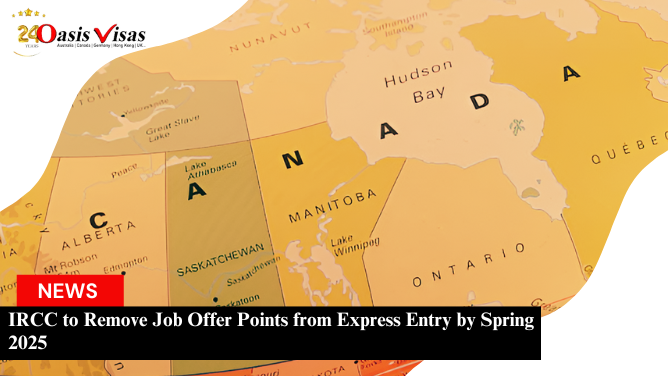
The immigration system in Canada saw numerous major developments in 2022, as the nation managed the effects of the COVID-19 pandemic.
IRCC (Immigration, Refugees and Citizenship Canada) has continued to evaluate economic and societal needs in Canada through immigration- generating new and crucial developments and changes this year, which may have a great influence on Canada’s immigration system in 2023.
The Immigration Levels Plan
Maybe the immigration levels plan was the most impactful announcement of the year. On November 1st, IRCC declared its plan to welcome newcomers over the next 3 years. The country will look forward to welcoming more than 1.45 million new immigrants between 2023 and 2025 through its family, economic, humanitarian, and refugee class streams.
In 2025, the annual number of immigrants will increase to 500,000. The PNPs (Provincial Nominee Programs) are set to go beyond Express Entry as the main economic immigrant pathway in Canada.
There are historic immigration levels that have not been witnessed since the previous century. Moreover, they speak to the significance of immigration as a strategy for recovering from the COVID-19 pandemic.
Express Entry Resumes in 2022
This July witnessed the return of Express Entry draws for the first time since December 2020, which was a turning point in COVID recovery for the country.
The Express Entry system includes the following:
- The Federal Skilled Worker Program (FSWP)
- The Federal Skilled Trades Program (FSTP)
- The Canadian Experience Class (CEC)
Together these programs welcome a large number of economic immigrants yearly.
International Students able to Work over 20 Hours a Week
Starting November 15th, 2022, international students are provisionally able to work over 20 hours a week during school sessions. This growth marked a massive change from prior employment conditions for students, who earlier had a ceiling of 20 hours a week in part-time work, during academic semesters.
Students can now work an indefinite number of hours during academic semesters in part-time work off-campus, until December 31st, 2023. This change targeted addressing historic labour shortages in Canada, specifically in sectors that are occupied by students at regular intervals (e.g.: food services, hospitality, and retail sectors)
NOC 2021 Changes and Added Express Entry Eligibility
Canada, on November 16th, 2022, implemented the 2021 NOC (National Occupation Classification) is used for categorizing and describing occupations.
The major change was an updated shift to TEER (Training, Education, Experience, and Responsibilities) codes. Thus, 16 newly eligible occupations were added to the Express Entry system while 3 occupations were removed from Express Entry eligibility owing to the change.
This change has received further attention because of the unintentional glitches that have followed NOC changes to IRCC systems, which affect some candidates for Express Entry.
New Brunswick Announces New Immigration Pilot
In early November, Immigration and Opportunities New Brunswick declared a new immigration pilot to welcome critical workers to the province. The program, which was named the New Brunswick Critical Worker Pilot (NBCWP), was designed to address the specific labour needs of the province. And it is noted for its focus on assisting immigrants in settling in New Brunswick.
This program is fulfilled by 6 select employees in industries such as farming, food production, manufacturing, and aquaculture; selected for their already existing immigrant settlement services. The NBCWP is part of a new and larger initiative from Immigration, Refugees and Citizenship Canada to welcome newcomers to broader parts of the country that are in need of individuals.
Express Entry to Target Occupations in 2023
Bill C-19, on June 23rd, was passed in both houses of parliament. This bill includes a provision that allows the immigration minister to build groups within the Express Entry pool, based on policy aims (like in-demand occupations), and issue ITAs (Invitations to Apply) to these groups.
The target of Bill C-19 is to leverage Express Entry to address labour market needs in Canada. While the policy change assists Canada in meeting labour shortages, it signifies a move from the current system of issuing ITAs, which are based on CRS (Comprehensive Ranking System) scores.
Extensive Trends Moving into 2023
The coming year will be shaped by several vital changes that are made in 2022. These themes consist of the following:
-
Renewed Efforts for Welcoming Newcomers to Canada’s Wider Parts
The development of the Provincial Nominee Program, the NBCWP, and the strength of the AIP (Atlantic Immigration Program) support this idea. These are possible signs that IRCC will seek to welcome newcomers in less populated provinces while aging populations have the need for immigrants.
-
A Trend of Aiming at Specific Professions for Immigration
Immigration, Refugees and Citizenship Canada expressed its objective to pursue this strategy in 2023, in the midst of record job vacancies. The country has eradicated all obstacles to permanent residence for physicians – one of the most in-demand professions in recent years.
-
A Constant Move Towards Increasing Canada’s Potential Workforce
Amid persistent labour shortages and continued qualification of immigrants, IRCC has already made changes to this end. Among these is the new OWP eligibility for families of LMIA-based work permit holders. These changes propose the country’s interest in better using foreign talent already in Canada.









